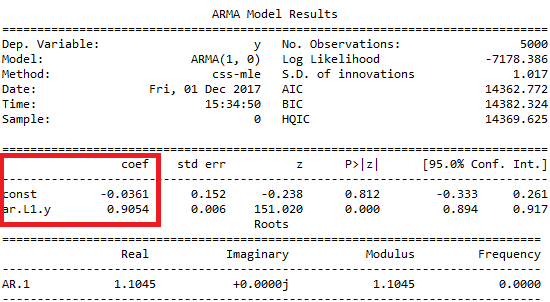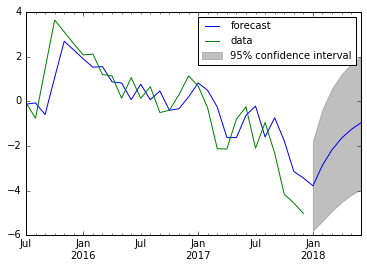Estimating and Forecasting an AR Model
Time Series Analysis in Python

Rob Reider
Adjunct Professor, NYU-Courant Consultant, Quantopian
Estimating an AR Model
To estimate parameters from data (simulated)
from statsmodels.tsa.arima_model import ARMA mod = ARMA(data, order=(1,0)) result = mod.fit()ARMA has been deprecated and replaced with ARIMA
from statsmodels.tsa.arima.model import ARIMA mod = ARIMA(data, order=(1,0,0)) result = mod.fit()For ARMA, order=(p,q)
- For ARIMA,order=(p,d,q)
Estimating an AR Model
- Full output (true $\large \mu=0$ and $\large \phi=0.9$)
print(result.summary())

Estimating an AR Model
- Only the estimates of $\large \mu$ and $\large \phi$ (true $\large \mu=0$ and $\large \phi=0.9$)
print(result.params)
array([-0.03605989, 0.90535667])
Forecasting With an AR Model
from statsmodels.graphics.tsaplots import plot_predict
fig, ax = plt.subplots()
data.plot(ax=ax)
plot_predict(result, start='2012-09-27', end='2012-10-06', alpha=0.05, ax=ax)
plt.show()
- Arguments of function
plot_predict()- First argument is fitted model
- Set
alpha=Nonefor no confidence interval - Set
ax=axto plot the data and prediction on same axes

Let's practice!
Time Series Analysis in Python

